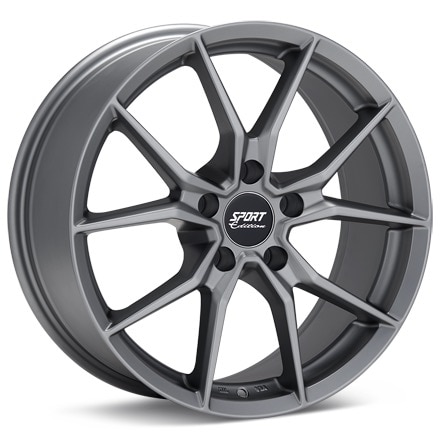Visiting Amusement Parks and Theme Parks – How To Avoid Long Lines With Simple Preparation
 Amusement parks and theme parks have been continuously entertaining guests for centuries. They whisk people away from the real world and immerse them in a fantasy environment packed with rides, entertainment attractions and plenty of food offerings. A great deal of walking is required due to typically large areas over which attractions are spread. This can be a good or bad thing, depending on how you feel about walking. You can reasonable expect to walk three to ten miles during a day spent in a large park. The biggest complaint most people have is long lines at rides and food counters. The good news is you can easily cut down considerably on the amount of time you spend standing in lines. All you need is a basic understanding of crowd flow and park layout combined with a little preparation before you leave home. Commit to arrive early.
Amusement parks and theme parks have been continuously entertaining guests for centuries. They whisk people away from the real world and immerse them in a fantasy environment packed with rides, entertainment attractions and plenty of food offerings. A great deal of walking is required due to typically large areas over which attractions are spread. This can be a good or bad thing, depending on how you feel about walking. You can reasonable expect to walk three to ten miles during a day spent in a large park. The biggest complaint most people have is long lines at rides and food counters. The good news is you can easily cut down considerably on the amount of time you spend standing in lines. All you need is a basic understanding of crowd flow and park layout combined with a little preparation before you leave home. Commit to arrive early.
The world’s first amusement park reportedly opened way back in 1583 in a community north of Copenhagen, Denmark. As you can imagine, its offerings were primitive compared with high-tech attractions common in today’s parks. Most parks in the United States evolved from the World’s Columbian Exposition in Chicago in 1893. The country’s first real “theme park” was Disneyland in Anaheim, California. Conceptualized by Walt Disney, it was years in design by Walt and his “imagineers”. So, what is the difference between amusement parks and theme parks? There are commonalities – rides, entertainment and food. However, theme parks add a dimension by creating an environment centered around a theme or variety of themes such as space travel, movies, sports, cartoon characters or music to name a few. Most theme parks are divided into several individually themed sections. Disneyland originally had five themed areas, each unique and rich in detail.
Successful theme parks draw large crowds daily. Popularity brings long lines, starting at the booth leading to the parking lot. Go early to beat the line of cars lining up to get in. This will also get you up front at the entry point. Avoid waiting in long lines all day inside the park by learning the lay of the land before you leave home. The easiest way is to simply visit the park’s website and check out the map. Some parks are designed in a “loop” or large circle-like pattern. Guests move around the loop going from one ride to the next. Other parks use a “hub and spoke” configuration, similar to the one introduced at Disneyland. The hub and spoke design is used at most Disney parks. Guests enter and head down a street or path in the direction of an icon in the middle of the park. From there, guests can choose from several “spokes”, each leading to a separately themed area. There are other designs but the two mentioned here are most common. Most parks offer two or three “main attractions” or “headliner rides”. These draw big crowds immediately after the park opens its gates. Crowd favorites are generally on opposite sides of the park or in different areas and are rarely situated next to or near each other. Most big parks also offer shows, concerts, parades or fireworks. Learn showtimes and major ride locations in advance so you can prepare your walking route and schedule.
Maximize your family fun with a plan, and remember these important points:
Purchasing tickets online, by mail or phone is your first time-saver because there will be no waiting in the line at the box office on the day of your visit. Have your ticket in hand and breeze on in!
Special events like shows and parades draw crowds away from rides thereby reducing wait times.
Make sure you leave ample time for parking and shuttling to the gate. You want to be at the gate at least twenty minutes before the official park opening. This will help you get a jump on things. Most people will arrive at the park between 10am and Noon. Arrive early and beat the crowds!
On busy days in peak season some parks open earlier than the posted opening time for crowd control purposes. Sometimes they open early during off-season. Always show up early.
If your chosen park is laid out in a loop, veer left and move in a clockwise fashion because most people will do the opposite.
At opening, move quickly – but don’t run – to the most popular attractions. Do your first ride and move quickly to the next big one. You might need to cross the park and do extra walking, but you will save time waiting in line.
After hitting the most popular rides you can relax your pace.
Most people eat lunch between 11:45am and 1pm meaning longer waits if you join the crowd. Why not plan to eat during the off times? Less time in line at lunch means more time for the rides.
Typically after 3pm the number of people leaving the park will outnumber people entering by a ratio of 3:1. If you book an extended stay you can apply this knowledge for future visits to the same park within your vacation package.
Crowds are biggest around major holidays and in peak season. Avoid these times when possible.
Find out in advance when the park has special promotions targeting “locals”. Avoid those days when possible.
Many popular parks will gridlock between Noon and 3pm. Use this block of time to visit less popular attractions, walk-through exhibits, interactive displays, browsing and exploring.
Research and plan before you go! It is fun to do and will help you save time in lines once inside the park.


